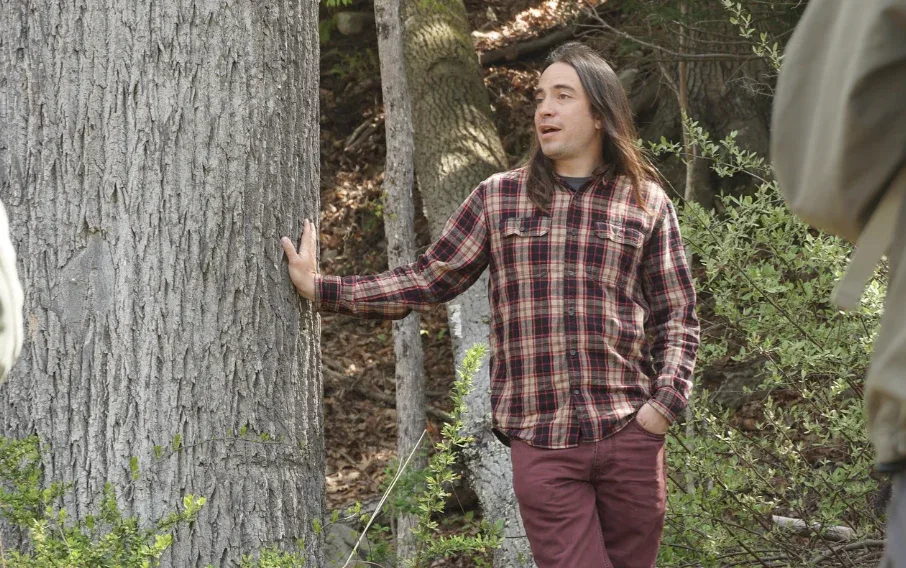We got to chat with Justin Wexler of Wild Hudson Valley and ask a few questions about the area’s indigenous culture. You can learn more from Justin at Ashokan’s Spring Explorations: Indigenous History walk on May 5 from 2-4pm at the Ashokan Center in Olivebridge, NY.
Who were the indigenous people around Olivebridge, NY before the American Revolution. Were they settled or always moving?
Justin: The Lenape group of the region came to be called the Esopus Indians. They lived in dispersed settlements on terraces above the floodplains on the tributaries of the Hudson River, such as Esopus Creek, where they grew crops such as maize, pole beans, sunflowers and pumpkins. People would leave their homes seasonally to go to their fishing camps closer to the Hudson River or to their hunting camps in the mountains.
What was spring time like for these communities?
Justin: Spring time was the time of fishing for anadromous fish, especially shad, alewives, and striped bass but also suckers. Late spring was sturgeon fishing season. Freshwater mussels, various edible wetland plants, and snapping turtles were also harvested in the spring. Many of their descendants still camp for days or weeks in the spring time to catch spawning fish in the Thames River and Grand River in Ontario (Munsee Delaware Nation, Moraviantown Delaware Nation, and Delawares of Six Nations Reserve).
Where are these native communities today? Do any still remain in NY?
Justin: All Lenape people were displaced from their homeland in the Hudson and Delaware Valleys between the 1730s and 1830s. Today they can be found in six communities — two in Oklahoma (Delaware Nation and Tribe), one in Wisconsin (Stockbridge Mohican Nation), and three in Ontario (those noted above). The Esopus Indians and their tribal government relocated to the Six Nations Reserve in Ontario.
Are there any records of any type of song or dance in these communities? E.g were songs, melodies, or dances passed down? If not traditionally, what about in these communities today?
Justin: Of course! They still have a vibrant culture of social dance songs. Songs are also seen as a form of prayer. One of their most important dances likely has roots in Ulster County (Check out this video of the dance on the Moraviantown Reserve, I was there that day)
Understanding Lenape means human, what do these indigenous people prefer to go by today?
Justin: They prefer to go by Lenape in all of their communities except the Stockbridge Mohican Nation; members there identify as Mohican as well as Lenape.
What else can be done by the everyday family in America to support these exiled communities and/or to show respect?
Justin: It is extremely important to not support people claiming to be Lenape or Mohican but have no ties to the actual (federally recognized) Lenape communities. The federal recognition system in the USA and Canada was created in part by tribal leadership as a way to uphold their sovereignty as indigenous nations. State recognition and other kinds of recognition of individuals/groups, such as “Schaghticoke First Nations Inc.” or the “Ramapough Lenape Nation,” undermine that sovereignty.
Where can one go to learn more?
Justin: Their tribal nation websites are also sometimes good sources of information
Justin Wexler’s knowledge of indigenous traditions and practices comes from sifting through archives of material from the past 500 years, plus archeological studies and unpublished ethnographical field notes to really understand and reconstruct people’s way of life in the Hudson Valley in the pre-contact period. Justin has connections and relationships with descendants of Hudson Valley tribes, mostly in the current Moraviantown Reserve in Ontario. Justin’s goal is to remind everyone that indigenous people and plants of the Hudson Valley still exist, that they are just elsewhere with hopes of maybe one day returning to their ancestral land. Justin invites indigenous communities down from Canada a couple times a year to visit their ancestral lands, taking them to sites of known concentrated communities.
Wild Hudson Valley was founded in 2013 to teach about the rich history and environment of the region in a fresh, new way. HVH’s walks, workshops, forest farmed products, and camping bring the past into the present and inspire others to become stewards of our planet.

